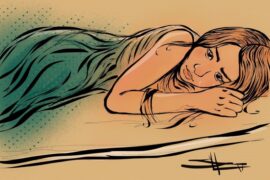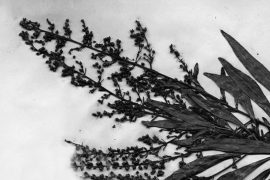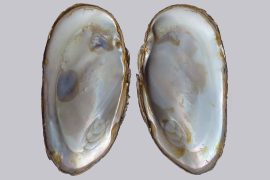The rhythmic movement of a Cobra, the world’s most dangerous snake, can put anyone into a trance. It can also be the most terrifying image because one sting can kill a person in an hour.
India is home to a variety of highly venomous snakes, and it has the highest number of snakebite cases, accounting for nearly half of all snakebite deaths worldwide. Almost 50,000 people in the country die as a result of snakebites each year, and the only effective treatment is the prompt administration of antivenom.
Six companies in India produce approximately 1.5 million vials of antivenom annually. Most of it is derived from venom extracted by the indigenous tribe, the Irulas, who are largely unknown for their contribution to global healthcare system.
A group of Irulas leaves Vadanemmeli on East Coast Road in Chennai at 5.30 a.m., armed with a crowbar, a sabre, and a cotton bag. The five-member team takes the first bus to Mambakkam village on the Kelambakkam–Vandalur Road and travels to a paddy field in the nearby Kolathur village. This is the daily routine of Irula tribals who work as snake catchers for the Irula Snake Catchers Industrial Co-operative Society, which is based at the Crocodile Bank on ECR.
The Irula tribe is one of India’s oldest indigenous communities. They are known for their ancient and personal knowledge of snakes and live along the north-eastern coast of Tamil Nadu. Their abilities are a necessary but nearly invisible component of India’s healthcare system.
The Irula community’s origins and interactions with snakes are unknown, but their mythology combines local animistic traditions with mainstream religious vocabulary. Their main deity is Kanniamma, a virgin goddess closely associated with the cobra. Many rituals involve the priest entering a trance and hissing like a snake to represent the goddess’s spirit.
For much of the twentieth century, tens of thousands of Irulas made a living by hunting snakes for their skin. However, they would not eat its meat out of respect for their goddess. Tanners in the region would pay between 10 and 50 rupees for a single skin before processing and exporting it to Europe and the United States for use in the fashion industry.
In 1972, India’s Wildlife Protection Act prohibited hunting several animals, including snakes. This dwindled the source of income for the community and decimated the livelihood of the Irulas overnight.
Herpetologist and conservationist Romulus Whitaker, who has been working with the Irulas for nearly 50 years, says the small amount of money they make from selling snake skins forms a significant portion of many Irula families’ monthly income.
“After the Wildlife Protection Act came into force, the Irulas were in bad shape,” said Whitaker in an interview with BBC Travel. “I would say that they were starving.”
Because they were hunter-gatherers, the Irulas were accustomed to being labelled as poachers by local government authorities. Other people in the area regarded them with mistrust, and their work with snakes exacerbated the hostility.
According to Susila, an Irula lady, they were given disparaging names, mistreated in their villages, and often deceived when they wanted to borrow money. Many Irulas were uneducated and ended up working as bonded labourers in mills dehusking rice.
Whitaker has been working for more than four decades to provide economic stability for the Irulas. Most members of the Irula community near Chennai now work for the Irula Snake-Catchers Co-operative, which was established in 1978. It is an organisation that uses its expertise to catch venomous snakes and create antivenoms.
The establishment of the co-operative society was a watershed moment. Despite employing fewer than 1 per cent of the population (estimated to be about 190,000 in a 2011 census), the collective’s existence gave credibility to their traditional talents.
The organisation aimed to ensure equal income opportunities for the members. The job, as per a 2018 report, paid fees for capturing dangerous snakes varying from Rs 500 to Rs 2,500 (for the king cobra). Furthermore, due to the availability of antivenom, there has been a significant improvement in treating snakebites in and around Chennai.
Generations of capturing snakes and rodents have given the Irulas an excellent grasp of these animals, and their expertise often confounds even seasoned contemporary specialists. Irula communities in and around Chennai and Chengalpet have successfully adapted to hunting snakes in urban and suburban regions, and some people have achieved international recognition.
The Florida Fish and Wildlife Conservation Commission invited them to the United States due to their expertise with snakes. Masi and Vadivel, two members of the collective, travelled halfway across the globe to participate in a project to reduce the enormous issue of Burmese pythons in the Everglades National Park. These massive snakes are endangering the national park’s endangered small animal species.
Masi and Vadivel caught thirty-four pythons over two months and sixty excursions into the Everglades. Trained sniffer dogs and American hunters could not equal this level of effectiveness. They were reportedly compensated generously for their efforts.
Since then, the Irulas’ knowledge has been in great demand all around the globe. ‘[The Irulas] are our best bet,’ admitted Joe Wasilewski, a wildlife expert with the University of Florida.
The co-operative has legal permits to house up to 800 snakes at a time. They sustainably collect venom without keeping the snakes in captivity for too long.
According to a staffer, each snake is maintained for 21 days. During that time, the venom is removed four times and then released back into the wild. Before they are released, a tiny mark is placed on their belly to prevent the snake catchers from capturing the same snake again and again. After a few moultings, the mark vanishes.
Regardless of these recent developments, the Irula tribe faces pressure from urbanisation, as do most indigenous communities in India. Urban development encroached on Vadanemmeli, and commercial enterprises intruded on natural areas.
Chennai has a population of about seven million and is expanding in all directions. Irula tribe members are nervous as Vadanemmeli may be gradually absorbed by the expanding metropolis. High-end resorts with views of the sea and its backwaters are sprouting up closer to the venom extraction location.
Furthermore, the World Health Organization has advised that antivenom be produced from snakes kept entirely in captivity. Irulas fear that their talents may become less in demand since they specialise in capturing wild snakes.
Most Irula parents want their children to be a part of mainstream Indian society. Many go to school and do not accompany their parents into the forest. The younger generation is losing contact with their community’s traditional snake-catching abilities, threatening the death of many skills and knowledge that survived in the tribe through generations.
Irulas, who live behind the curtains of the Indian healthcare system, are the major antivenom providers that supply hospitals nationwide. With the disappearance of their traditions and culture due to urbanisation, the country’s medical system may face a considerable loss.
-30-
Copyright©Madras Courier, All Rights Reserved. You may share using our article tools. Please don't cut articles from madrascourier.com and redistribute by email, post to the web, mobile phone or social media.Please send in your feed back and comments to [email protected]











